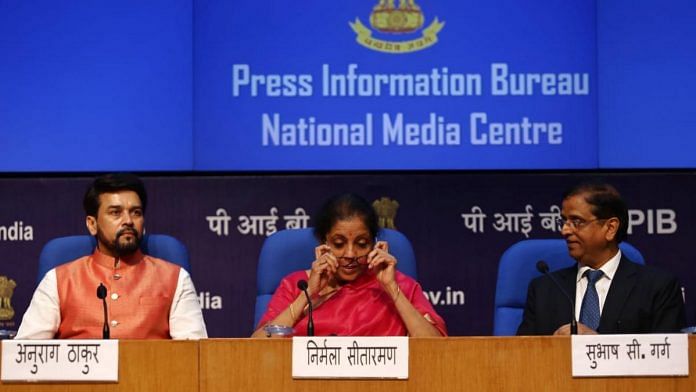New Delhi: India is contemplating organizing an annual global investors’ meet in the country, akin to the World Economic Forum in the alpine resort of Davos, to carve out a bigger global role for itself.
The move will help create a niche for Asia’s third-biggest economy within the international financial system, Finance Minister Nirmala Sitharaman announced in her budget speech on Friday. China — India’s geopolitical and economic rival — already has its own version of such a summit, known as the Boao Forum for Asia.
Prime Minister Narendra Modi, who made his Davos debut last year, has used this tack before as the chief minister of the Indian state of Gujarat before becoming the nation’s prime minister in 2014. The biennial Vibrant Gujarat summit, which was followed by other Indian states, helped raise Modi’s profile.
The idea for holding a summit is being mooted at a time the government is looking to attract more investments from overseas as it seeks to spur economic growth and generate more jobs. India also wants to tap investors who can help fund 100 trillion rupees ($1.5 trillion) to build infrastructure over the next five years.
“It is high time India not only gets integrated into global value chain of production of goods and services, but also becomes part of the global financial system to mobilize global savings, mostly institutionalized in pension, insurance and sovereign wealth funds,” said Sitharaman.
India will anchor its ambitions to the National Investment & Infrastructure Fund, Sitharaman said, without elaborating. First announced in 2015, soon after Modi came to power, the NIIF is a quasi-sovereign fund meant to attract financing for new roads, ports, railways and power plants. –Bloomberg
Also read: Budget 2019 will boost growth only if Modi govt is friendly towards business and profits







Let us consider the reasonable risk free return on infrastructure investment to be 6%, insulated from foreign exchange risk. It is a long gestation commitment, not at all liquid like US Treasuries. Does India have an inventory of economically viable projects of this nature, which can generate a stream of $ 90 billion a year, to be paid to Norwegian, Middle Eastern, even Chinese sovereign wealth funds, or other pools of capital like Canadian pension funds. 2. Before getting into the deep financial end of things, it may be more productive to integrate with global manufacturing supply chains. There is some encouraging buzz about India getting a little more serious about RCEP, the FTA with the EU, even a trade agreement with the US. Recent protectionist moves are distancing us from the global economy. The last few years have not raised our global profile. Let some appetising flavours waft from our kitchen, for the diners to gather.